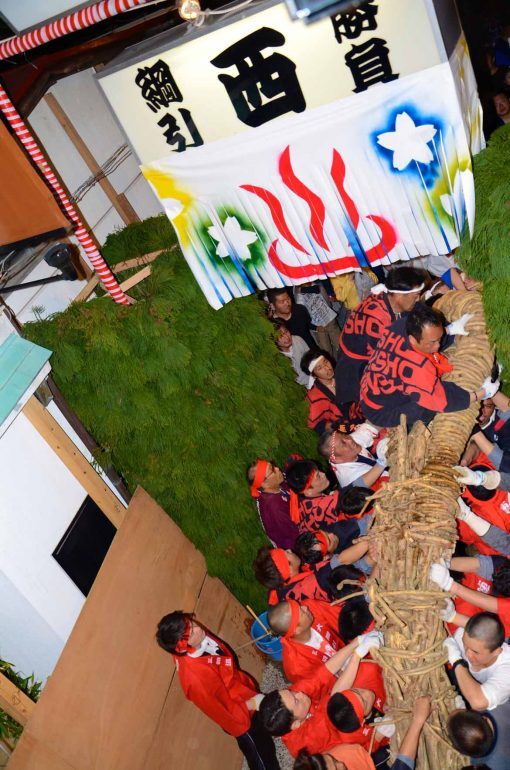Like this post? Help us by sharing it!
In the centre of beautiful Tottori Prefecture, considered to be the most rural of all Japanese prefectures, Misasa Onsen is a charming hot spring town loved by locals and visitors alike.
Misasa Onsen dates back more than 850 years. Local legend says that a samurai warrior (Samanosuke Okubo) encountered an old white wolf one day. Although he raised his bow to shoot the wolf, he decided to spare its life and let it get away. That night, a powerful spirit appeared in the warrior’s dreams and told him the location of a local hot spring in appreciation of sparing the life of the wolf. After that, the hot spring was said to have “life-saving properties”, and would heal villagers’ illnesses. Misasa literally means “three mornings”, as it is believed that on the morning of the third day visitors will feel invigorated.
All of the town’s hotels and inns have baths for guests and paying customers, and there are a number of more basic, community ones. The open-air bath by the river, “kawara-buro”, is free and open year-round. It is quite easily viewed from the bridge and has become the most famous and central symbol of the town.
As a “long in the tooth” InsideJapan Tour Leader and resident of Misasa, I wanted to provide an all-encompassing guide to the wonderful town I call home.
A seasonal guide to Misasa Onsen
I personally think Misasa is a great place to visit at any time of the year. However, to best appreciate the many hot springs in the town, it’s probably best to come in winter, spring or autumn. There are many beautiful cherry trees to admire in spring and the autumn colour in the nearby gorges and valleys is equally stunning. You could try your hand (foot?!) at snowshoeing or just enjoy the snow-covered scenery in winter.
However, you could also time your visit and stay to coincide with one of the town’s famous festivals.

Hanaya Festival: May 4th
Misasa’s first festival of the year is also its most famous.
The Hanayu Festival in May primarily celebrates the birth of the Shakyamuni Buddha. However, it is also seen by many as a means to celebrate and give thanks to the healing properties of the town’s famous hot springs.
The main event of the festival is a giant tug of war called “Jinsho”. A day is spent preparing the giant rope, which is constructed from wisteria. The giant creepers are twisted and bashed together into two parts of the rope, said to represent male and female. Each segment can be up to 80 metres long, 1.5 metres wide and can way a massive two tons – that’s four tons in total!
With great effort, the two parts of the rope are joined together in the middle of Misasa’s main street. This usually takes a few attempts and can take up to half an hour or more.
As soon as the ropes are joined the tug of war begins and the two teams (East and West) begin to pull. The winning team is said to have good luck for the next year. Spectators are encouraged to help so have a chance to really get involved in the festivities.

Mount Mitoku Fire Festival: Last Sunday of October
The “Honoo no saiten”, or Mount Mitoku Fire Festival, is arguably the most dramatic of the town’s main festivals. The event is actually the festival of Sanbutsu-ji, the main temple of the sacred Mount Mitoku. Mount Mitoku has been known from ancient times as a place of religious significance. Sanbutsu-ji is a historically significant temple designated an Important Treasure of Japan in 1952.
Every year, on the last Sunday of October, the main event of the festival starts with prayers and chanting in front of the temple buildings. Spectators and worshippers are encouraged to write wishes on small wooden plaques known as “ema” for a small donation fee.
After some more rituals, the temple’s priest sets fire to the wooden plaques and the wishes are said to ascend to heaven.
A second fire is built and a small wooden “bridge” is built above it, just inches off of the ground. At this point anyone who wishes to do so can walk barefooted across the fire-licked bridge for good luck. Don’t worry, it doesn’t hurt!
Marie Curie Festival: Early August
The Marie Curie festival was first held back in 1951 and has since become one of the most important and celebrated festivals in the area.
Misasa’s hot springs are famous around Japan and beyond for having high levels of radium. In fact, they are among the most radium-rich hot springs in the world. Radon, a weak radioactive substance produced by the decay of radium and dispersed into the air, is also abundant. The hot springs are not just beneficial to the local resident’s health, they are also essential in attracting thousands of tourists to the area each year.
The Marie Curie Festival was created as a way of paying homage to the Polish-French scientist who first discovered radium. It also serves an important role in reinforcing the strong bonds between Misasa and France. The festival was one of the first cultural exchange events organised by the town. 2017 represents the 61st time the festival will be held.
Several events take place during the course of the festival including various performances, fireworks and dances. The main event is considered the “Waiwai Parade”. Many local people dress up in traditional clothing and perform dances specific to the town, such as the “Misasa Kouta”.
Richard Pearce is one of InsideJapan’s most experienced tour leaders, and lives in Misasa Onsen.


